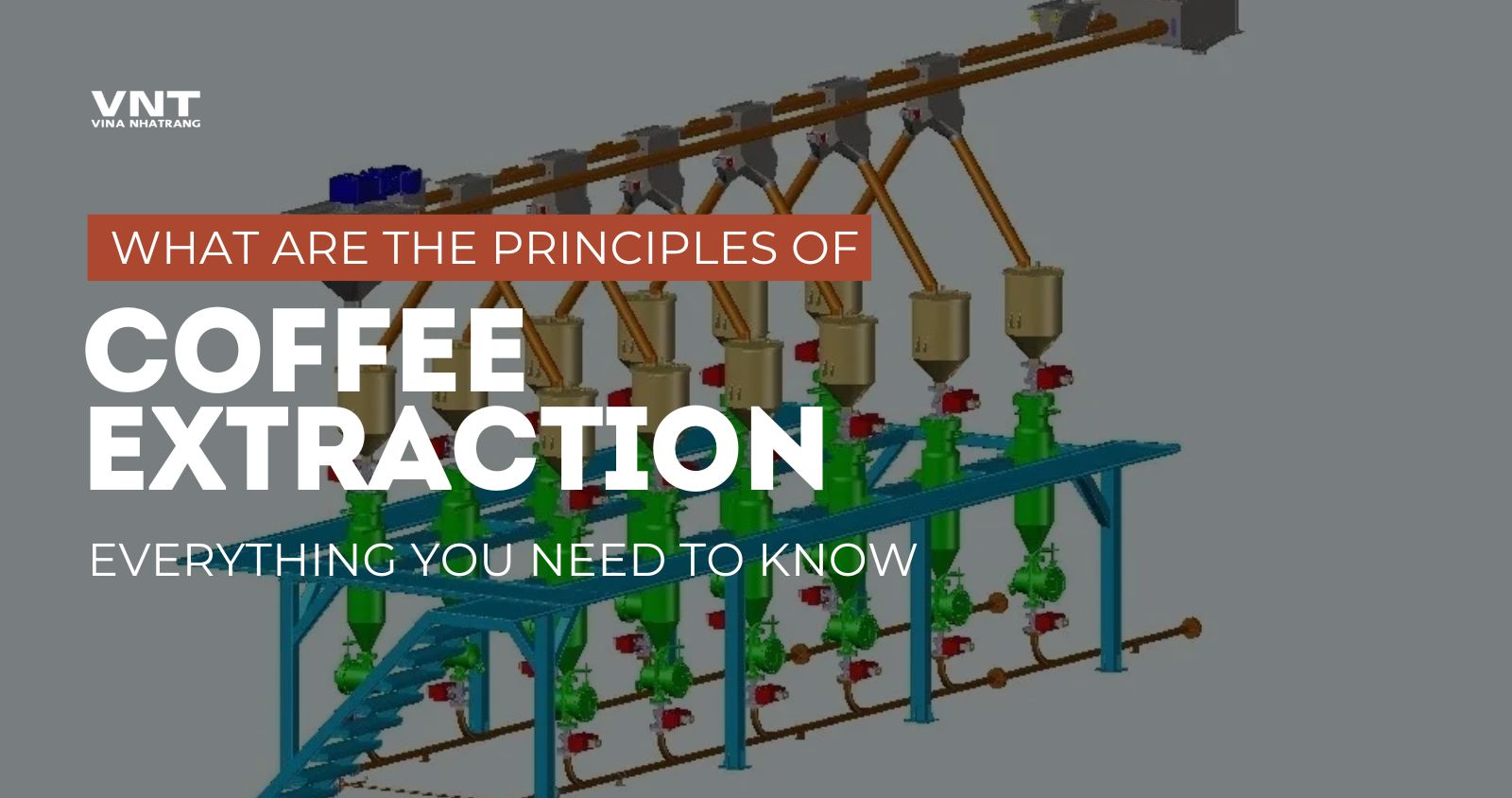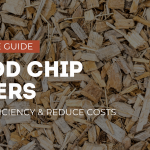The art of brewing a delectable cup of coffee lies in the intricate process of coffee extraction. This critical step determines the balance of flavors and aromas that ultimately delight our senses. Understanding the principles of coffee extraction is crucial for coffee business owners who strive to deliver a consistent and exceptional taste experience to their customers.
Mastering coffee extraction is not merely a matter of technique; it’s a journey into the depths of flavor exploration. By comprehending the nuances of this process, coffee professionals can unlock the true potential of their beans, elevating the taste and quality of their offerings.
Want to learn more about Instant Coffee Processing? Check out the machines in our Instant Coffee Processing System
What is Coffee extraction?
Coffee extraction is the process by which soluble flavors and compounds from ground coffee beans are dissolved into water. This process is the heart of coffee brewing, where the magic happens. The goal is to achieve an extraction yield between 18% and 22%, which is considered the optimal range for a well-balanced and flavorful cup of coffee.
During extraction, the water acts as a solvent, drawing out the desirable compounds from the coffee grounds, including acids, oils, sugars, and caffeine. The resulting liquid is the celebrated elixir we know and love as coffee.
Check out our Instant Coffee Extraction System
The Science Behind Coffee Extraction
Coffee beans are complex matrices of organic compounds, each contributing to the unique flavor profile of the brew. The primary constituents include acids (such as citric, malic, and acetic acids), caffeine, lipids, sugars, and carbohydrates.
Interestingly, these compounds are extracted at varying rates during the brewing process. For instance, acids and sugars are more readily soluble, while lipids and larger carbohydrates require more prolonged extraction times. This staggered extraction is what creates the dynamic and layered flavors we experience in a well-crafted cup of coffee.
Find out more about the science behind coffee extraction on our guide about Coffee Extraction Technology
The Dynamics of Coffee Extraction
Coffee extraction is a dynamic interplay between two processes: erosion and diffusion. Erosion occurs when water directly dissolves the exposed compounds on the surface of the coffee grounds. Diffusion, on the other hand, involves the migration of compounds from within the grounds to the surface, replenishing the supply for further extraction.
Erosion
Erosion is the more rapid of the two extraction processes, driven by the mechanical forces exerted by hot water on the coffee grounds. As the water comes into contact with the grounds, it begins to break down the cell walls and membranes of the coffee particles, releasing their soluble contents into the brew.
This process is particularly dominant in brewing methods that utilize finely ground coffee, such as espresso. The smaller particle size results in a greater surface area exposed to the water, allowing for more efficient erosion and faster extraction of compounds.
Erosion is responsible for the initial burst of flavor and aroma compounds that are quickly extracted from the coffee grounds. It accounts for the majority of the extraction yield in methods like espresso, where the brewing time is relatively short.
Diffusion
While erosion plays a crucial role in the initial stages of extraction, diffusion takes over as the primary mechanism as the brewing process continues. Diffusion is the process by which dissolved compounds migrate from areas of high concentration (inside the coffee particles) to areas of low concentration (the surrounding brew water) through the principles of molecular motion and concentration gradients.
As the soluble compounds are eroded from the outer layers of the coffee particles, diffusion becomes increasingly important for extracting the compounds trapped within the inner layers. This process is much slower than erosion, as the dissolved compounds must navigate the complex network of pores and channels within the coffee particles to reach the surrounding water.
Diffusion is the dominant mechanism in brewing methods that employ coarser grinds and longer contact times, such as pour-over or immersion methods like French press. The larger particle size and extended brew times allow for a more gradual and controlled extraction, relying heavily on the principles of diffusion.
The Balance Between Erosion and Diffusion
The interplay between erosion and diffusion is what ultimately determines the extraction yield and flavor profile of the final brew. In methods like espresso, where erosion dominates, the extraction process is rapid, and care must be taken to prevent over-extraction, which can result in harsh, bitter flavors.
Conversely, in brewing methods that rely more heavily on diffusion, the extraction process is more gradual, allowing for a more nuanced and controlled extraction of flavors. However, under-extraction can occur if the contact time or water temperature is insufficient to facilitate efficient diffusion.
Achieving the perfect balance between erosion and diffusion is a delicate art that requires a deep understanding of the brewing method, grind size, water temperature, and contact time. By carefully manipulating these variables, coffee factory owners can fine-tune the extraction process to unlock the full potential of their coffee beans, delivering a product that delights customers with its harmonious flavor profile and captivating aroma.
Grind size
Grind size plays a significant role in these dynamics. Finer grinds initially exhibit rapid extraction due to increased surface area, but the process can stall as diffusion becomes the rate-limiting factor. Coarser grinds may start slower but allow for a more sustained and even extraction over time.
Factors Influencing Coffee Extraction
Several factors play a pivotal role in determining the efficiency and quality of coffee extraction, including:
- Grind Size: Finer grinds increase the surface area exposed to water, facilitating faster extraction. However, over-extraction can lead to bitterness and astringency, impacting product quality.
- Water Temperature: Optimal brewing temperatures vary by method, but generally, hotter water extracts more compounds, impacting the coffee’s flavor profile and aroma.
- Contact Time: Longer contact times allow for deeper extraction, but risk over-extraction and the development of off-flavors, hindering consistency.
- Agitation: Agitation helps distribute water evenly across the coffee grounds, enhancing extraction efficiency and ensuring a more consistent final product.
One of the most influential is grind size. A finer grind increases the surface area exposed to water, accelerating extraction but also risking over-extraction and bitterness if not carefully managed.
Water temperature, brewing time, and the coffee-to-water ratio are also crucial parameters. Hotter water enhances extraction, but excessively high temperatures can lead to astringency and burnt flavors. Longer brewing times allow for more complete extraction, but excessive steeping can result in over-extraction. Finally, the coffee-to-water ratio determines the strength and concentration of the final brew.
The Dynamics of Coffee Extraction
The principle of coffee extraction is about creating a harmonious blend of flavors and aromas that delight your customers. Achieving the perfect balance of extraction is a delicate art that requires a deep understanding of the intricate interplay between various coffee compounds and their impact on the final product.
A well-extracted coffee will exhibit a harmonious profile, where the sweetness from sugars, the brightness from acids, and the rich, velvety mouthfeel from oils and dissolved solids come together in perfect symphony. This balance is what distinguishes a truly exceptional coffee from a merely good one.
Sweetness, derived primarily from sucrose and glucose, is a key component of a well-extracted coffee. When extracted optimally, these sugars contribute to a pleasant, lingering sweetness that enhances the overall flavor experience. However, over-extraction can lead to the breakdown of these sugars, resulting in a harsh, bitter taste that overpowers the other flavors.
Acidity, on the other hand, is responsible for the bright, vibrant notes that add complexity and liveliness to the coffee. Originating from organic acids like citric and malic acids, these compounds contribute to the fruity, wine-like characteristics that many coffee enthusiasts cherish. Under-extraction can result in a flat, lifeless taste, while over-extraction can lead to an unpleasant, sour profile.
The body, or mouthfeel, of a coffee is heavily influenced by the extraction of oils and dissolved solids. These compounds contribute to the rich, velvety texture that coats the palate, creating a satisfying and indulgent experience. Proper extraction ensures that the body is neither too thin nor too heavy, striking the perfect balance for a luxurious sip.
Aroma is another critical aspect that can make or break a coffee’s appeal. Volatile compounds, such as esters and ketones, are responsible for the enticing aromas that waft from a freshly brewed cup. Optimal extraction releases these compounds in just the right proportions, creating a captivating bouquet that tantalizes the senses before the first sip is taken.
Over-extraction, however, can introduce bitterness and astringency, which can overpower the delicate flavors and aromas. This is often caused by the extraction of undesirable compounds, such as chlorogenic acids and tannins, which can leave a dry, unpleasant sensation in the mouth. Similarly, under-extraction may result in a weak, watery taste, failing to fully unleash the coffee’s potential.
The goal is to extract enough of the desirable compounds while minimizing the extraction of undesirable ones, delivering a product that showcases the unique characteristics of your coffee beans. This requires a masterful understanding of extraction dynamics, precise control over variables, and a commitment to continuous improvement through sensory analysis and experimentation.
By achieving this delicate balance, you can consistently deliver a product that not only satisfies but truly delights your customers, leaving them craving for more with each sip.
Conclusion: Balancing Coffee Extraction
The ultimate goal in coffee brewing is to achieve a balanced extraction, avoiding the pitfalls of under-extraction (resulting in a sour, underdeveloped taste) and over-extraction (leading to a harsh, bitter flavor). This balance is achieved by carefully adjusting the brewing parameters, such as grind size, water temperature, brew time, and coffee-to-water ratio.
For instance, if your coffee tastes sour, you may need to increase the brew time or use a finer grind to enhance extraction. Conversely, if the coffee is overly bitter, reducing the brew time or coarsening the grind can help mitigate over-extraction.






